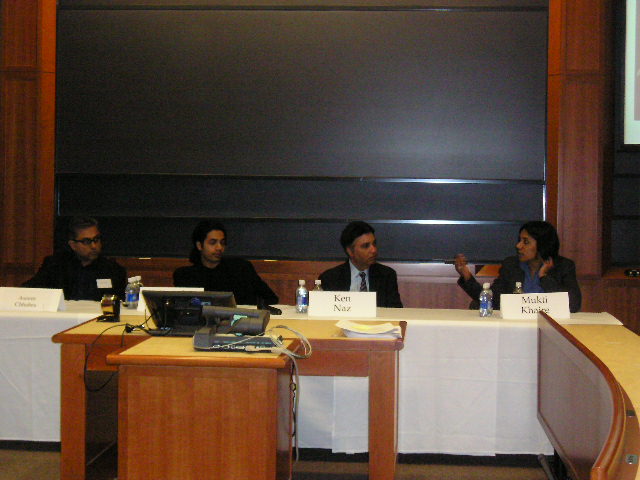Contribute
| Tryst With Power - India Conference 2006 |
Anil Saigal
03/22/2006
“Indians abroad have helped changed India’s perception of India itself,†said Arun Shourie in his opening remarks at The India Conference at Harvard Business School on Sunday March 12, 2006, which was organized by Vishal Rao, Nisa Godrej and Amuleek Singh and had nearly 400 people in attendance. Today Indians are returning back to India for opportunities and growth. India’s growth is around 7-8% across the board including changes in manufacturing sector and precision engineering, housing, and power in which legitimacy has moved from government to industry, society and professionals. India today is a “Confident Indiaâ€. A few years ago when the Chinese batteries were introduced, there was a lot of hue and cry in the parliament. Today, those batteries are non existent, Indian factories are booming and series of crisis have come and gone, said Shourie. The clinical experience of doctors is unmatched, drug discovery for AIDS and hepatitis is booming, new car designs are being done at 1/10th the cost as compared to those in the developed countries, and agriculture is still untouched. However, according to Shourie,â€There is a complete collapse in education and India needs competent people to run the government.†State has an effective role to play for human progress. In the early 20th century, both India and China had average life expectancies of about 40 years. Given the policies in mid century, India’s life expectancy grew to 54 while that of China reached 68. Since 1979 when China decided to withdraw its universal health care, it has paid a heavy price. Today China’s life expectancy is around 71 and while India’s overall life expectancy is 64, Kerala with a life expectancy of 76 has surpassed China. Mukti Khaire, Assistant Professor, Harvard Business School, in her overview of the panel said, “Media and Entertainment is one of the fastest growing segments of the Indian economy. Bollywood currently produces 1013 films (739 for Hollywood), 3.6 billion ticket sold (2.6 billion for Hollywood) and has a 12.6% growth rate. The Indian fashion market is expected to reach 6.5% of the global fashion market by 2008 from 4% of $248B market today.†With these kinds of projection, India is the target country for businesses around the globe. “However, even though Bollywood has made significant penetration among NRI around the world, it has still not really crossed over,†said Todas, a freelance writer from New York, a sentiment which was echoed by Anand Jon, Fashion Designer. According to Jon, “There is no term as Indian Fashion, we are where the hip-hop community was 10-12 years ago and we need a cultural phenomenon.†Ken Naz, CEO, Eros International, agreed and said, “In order to realize our full potential, standards need to be scaled up, we need to increase awareness, and be bold as we are often shy, humble and afraid of rejection.†Other panels dealing with Rural Markets: Reaching 700 Million Consumers; Venture Capital and Entrepreneurship: Creating the Next Silicon Valley; Indian Multinationals: Becoming Global Champions; Private Equity and Hedge Funds: Investors at the Gate; Building a Career in India: Perspectives of Recent MBAs; Real Estate and Infrastructure; and Venture Capital and Entrepreneurship dealt with the challenges of over regulation in certain domestic markets, multiple laws by different ministries, high taxation, investment climate constraints and that low margin commodities are most likely going to be produced in China with India taking the lead in which engineering makes up a higher value of the project.
For India to keep progressing, “Every Indian should take one public issue and become an authority on it, stand up to intellectual challenge, focus on depth in addition to breadth, be a lobby for excellence in India and beam the world to India,†suggested Shourie.
“India has had two major policy weaknesses: neglect of basics (such as education and health) and illusion about what state can do,†said Amartaya Sen. “The past few governments have recognized this and focused on the second issue. However, the first issue needs not just money but organizational change such as not simply trying to eliminate the unions but to work with them.†Finally, “Boom depends on friendliness of economic climate not fierceness of political organizations,†said Sen.
You may also access this article through our web-site http://www.lokvani.com/

Media and Entertainment Panel
Amuleek Singh
Arun Shourie